Richard and Diane Van Vleck Personal Pages The Home Habitat |
This year, two pairs of kestrels nested successfully. The tower camera was not working this year and nesting in the tower was not monitored with video. The female was first observed entering the tower on April 13. Only two fledglings were observed on June 15. One was on an electric wire and the other fledged from the tower as I approached. These were either the last two or the only two. When the nest was inspected, no nestling remains or eggs were found and there may have been more than the two observed fledglings. There was again no attempt at a second brood as in 2004-2006.
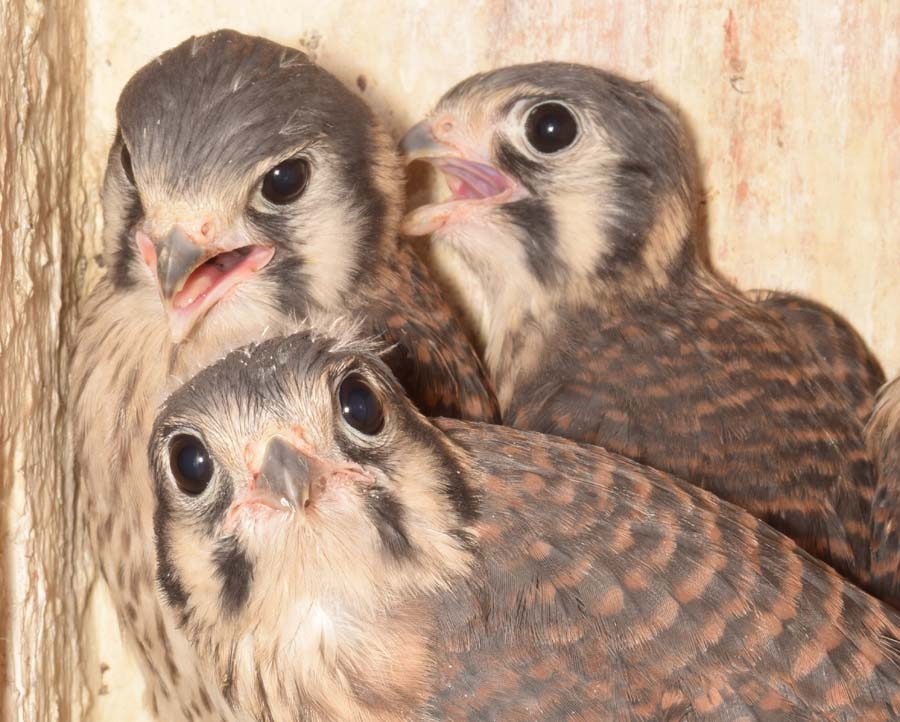
Nestbox “A” on the barn wall was fitted with an extension for photography this year to enable a side view rather than the top down video view. The kestrel pair using box “A” fledged five nestlings, four female and one male. Video was monitored and recorded intermittently. The five eggs were laid every other day from April 15 through April 23, with incubation beginning on April 19.

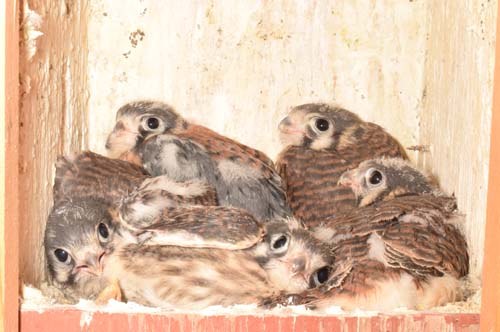
Note that the one male nestling usually remained hidden behind his sisters when the camera access door was opened. At the same time, one or two of the females would sometimes hop into the camera housing to explore. With kestrels, it seems that females rule.
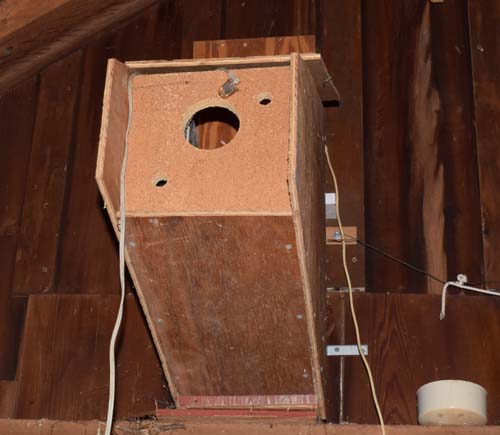
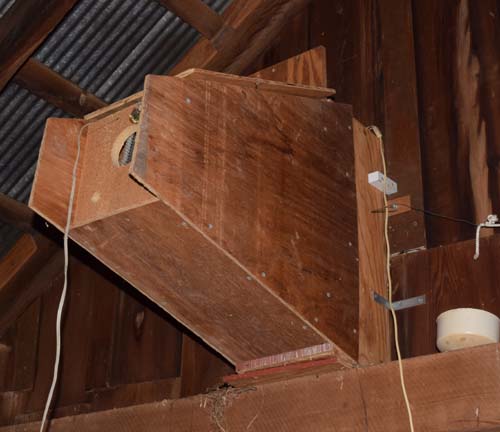
The modified nest box with camera extension. The camera can be operated by standing on a ladder or remotely from a lower floor, if desired.

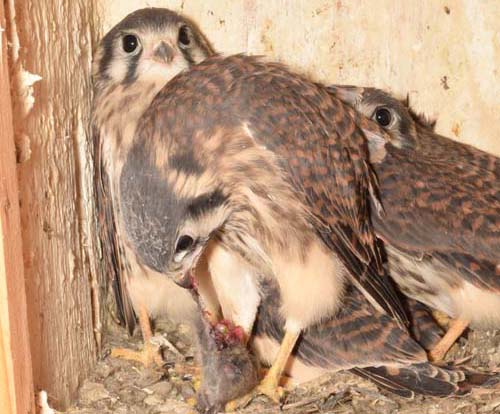
The nestlings become quite adept at butchering before they fledge.

Video of older nestlings 11 minutes. While very young nestlings usually seem to be adequately fed, that is less often the case for half grown nestlings who must begin competing for attention.
Video of younger nestlings 9 minutes
Last year (2018) this nest box was used by Northern flickers and the nest was predated by a black rat snake. 2018 Black rat snake predation. Three nestlings fledged from the tower.
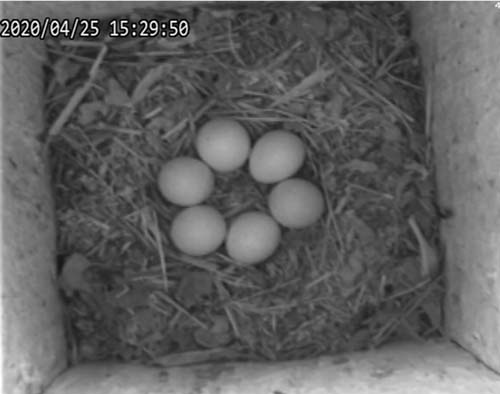
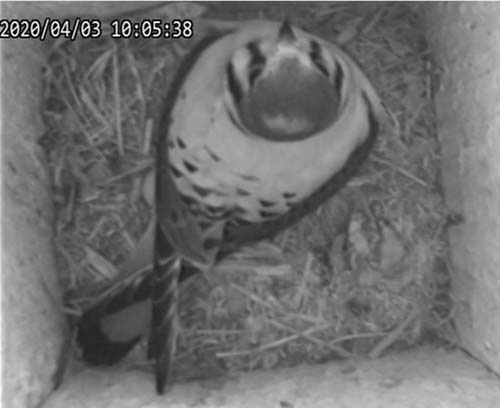
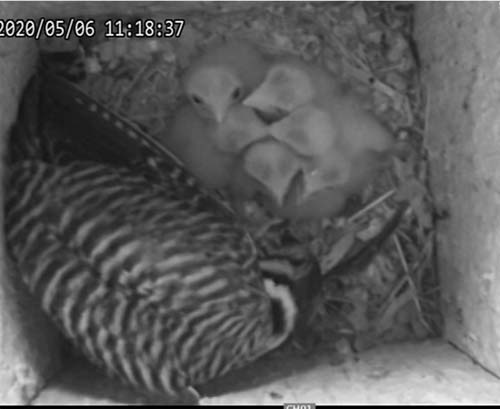
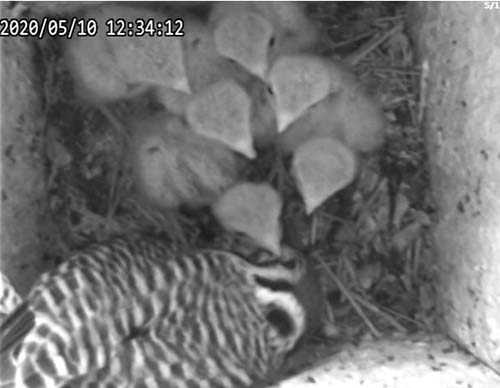
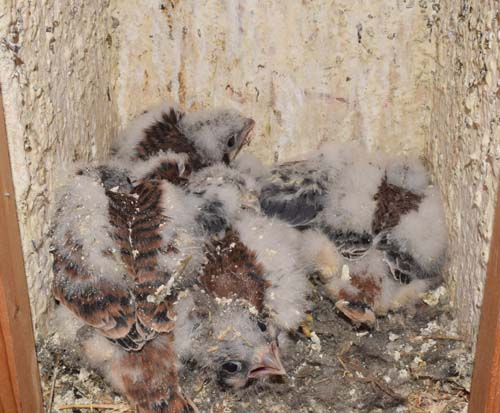
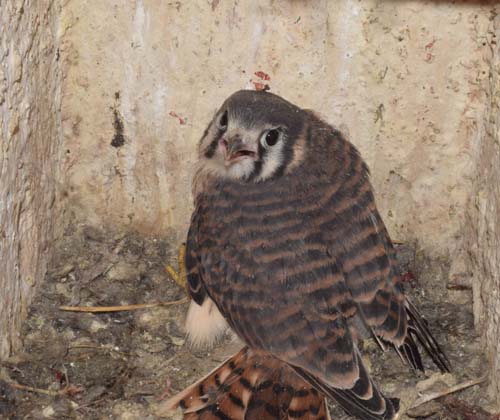
The 19 day old nestlings often squirt their excrement too high, causing it to fall back down on them. It is supposed to land on the walls, thus keeping themselves and their nesting material clean. In an earlier Kestrel page, I had mentioned planning to raise the roof on the tower box, putting the camera lens out of reach of these vertical squirts. But, now I realize that would be doing them a great disservice since much of their vertical squirting does adhere to a low roof, while it would all rain down on them if the roof were out of reach. The female above was the last of the six to fledge on June 1st. Well done, kestrels!